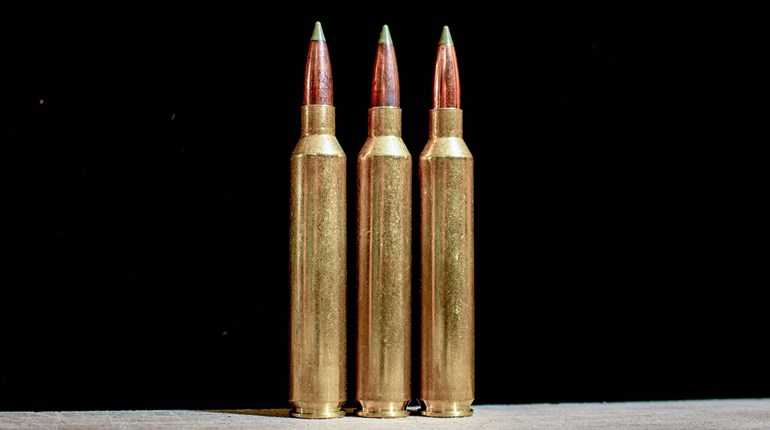
The home-defense load for shotguns has traditionally been 00 buckshot. In a 12-gauge shotgun, this is generally a load of nine .33-caliber balls traveling at nearly 1,250 fps when they leave the muzzle.
Of course, some magnum shotshells increase both the number of pellets and the velocity. The downside of this increased performance is an increase in recoil and recovery time. A person is just not going to shoot his best with a load that really smacks him every time he presses the trigger. There is much justification for going the other way when considering buckshot vs. birdshot for home defense.
A real problem for the homeowner who is defending his home and family is over-penetration. Rounds fired inside a house may break through walls and into other rooms that could be occupied by family members. Furthermore, it is quite possible for heavy defensive bullets to completely exit the house, placing neighbors in danger. One thing is for sure: The legal system is going to hold a person responsible for each and every shot he fires, regardless of his good intentions.
A while ago, I participated in an interesting buckshot vs. birdshot experiment. Ed Head, operations manager at Gunsite Academy, had his staff build targets from construction materials. They were made of two pieces of sheetrock with insulation between, but one had an additional layer of outdoor siding. These three targets were placed about 20 feet apart to simulate three walls of a house.
We began by firing standard 9 mm and .45 ACP defensive loads. These sailed right through all three walls. A 55-grain bullet from a .223 Rem. round showed improvement because it stopped in the second wall. Then it was time to try the shotgun loads.
First to be launched was a standard 12-gauge police buckshot load, driving nine pellets at approximately 1,250 fps. I thought the buckshot would be contained in the third wall. I was wrong. It penetrated all three walls with ease and sailed into the protective backstop. In an actual home, people in the other rooms would have been in grave danger. A 1-ounce, 12-gauge slug load gave the exact same results.
Our final test was a 12-gauge field load of No. 7 1/2 shot, a 1 1/8-ounce load running at 1,250 fps. This load entered the first layer of sheetrock, making one hole that was about 3 inches in diameter. It exited that wall completely, but merely splattered on the surface of the second wall. People in that second room would likely have been hit with birdshot, but it would probably not have been life threatening.
These simple tests convinced me that, between buckshot vs. birdshot, a standard birdshot load is usually best for a homeowner’s defensive 12-gauge shotgun. In close-range encounters, as found in most home-defense situations, birdshot can be deadly. But, it loses power so fast, over-penetration is much less of a problem. In a home full of children, it would certainly be my first choice.
The advantage of the shotgun is the variety of ammunition available. Choices range from birdshot to duck and goose loads to buckshot, and finally slugs. But remember, you will probably have to fight with what’s in the gun. There likely won’t be time to do a bunch of changing.
In my case, I have two shotguns. One stays in my vehicle and is loaded with 00 buckshot. My house gun is loaded with birdshot field loads, No. 6, No. 7 1/2, or whatever is available.
The shotgun is not as glamorous as a tricked-out AR or a custom-tuned fighting handgun, but it’s a great fight stopper nonetheless. Make the wide variety of shotgun loads work for you by selecting those that will do the job without needlessly endangering those who don’t deserve to be hurt.






































